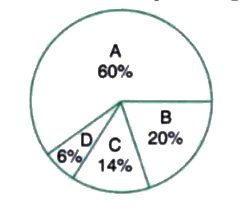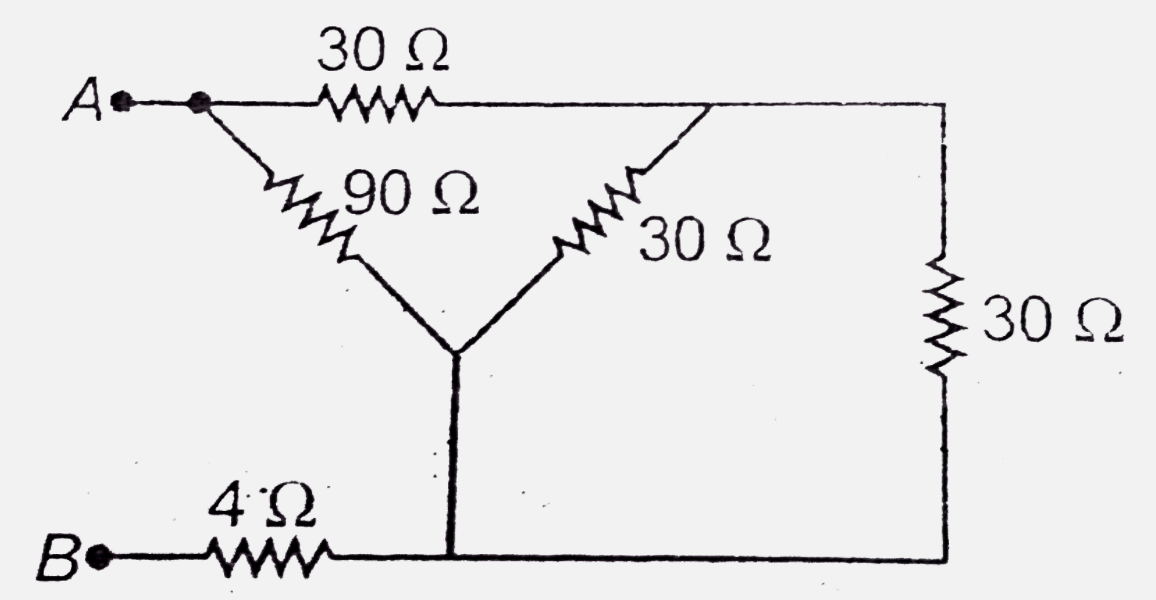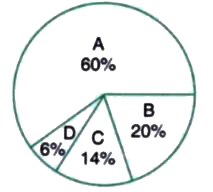The + l-effect is shown by
CH3
−OH
F
−C6H5
The correct Answer is:A
To determine which groups exhibit the +I (positive inductive) effect, we need to understand the concept of inductive effects in organic chemistry. The inductive effect is the permanent effect of the polarization of the electron density along a chain of atoms in a molecule due to the electronegativity differences between atoms.
1. Understanding Inductive Effect:
- The inductive effect can be classified into two types: +I effect (electron-donating) and -I effect (electron-withdrawing).
- The +I effect occurs when a group has lower electronegativity than the carbon atom it is attached to, resulting in the donation of electron density towards the carbon chain.
2. Identifying Groups:
- Consider the groups provided in the question:
- CH3 (methyl group)
- OH (hydroxyl group)
- F (fluorine)
- Phenyl group (C6H5)
3. Analyzing Each Group:
- CH3 (Methyl Group):
- Carbon in CH3 has the same electronegativity as the carbon in the chain. Therefore, it donates electron density to the carbon chain, exhibiting a +I effect.
- OH (Hydroxyl Group):
- Oxygen is more electronegative than carbon, which means it pulls electron density away from the carbon chain. Thus, it exhibits a -I effect.
- F (Fluorine):
- Fluorine is highly electronegative compared to carbon, so it also withdraws electron density from the carbon chain, showing a -I effect.
- Phenyl Group (C6H5):
- The sp2 hybridized carbon in the phenyl group is more electronegative than the sp3 hybridized carbon in the chain, resulting in a -I effect as it withdraws electron density.
4. Conclusion:
- Among the groups analyzed, only the CH3 (methyl group) exhibits the +I effect. Therefore, the correct answer to the question is CH3.
Final Answer:
The +I effect is shown by the CH3 (methyl) group.
- The inductive effect can be classified into two types: +I effect (electron-donating) and -I effect (electron-withdrawing).
- The +I effect occurs when a group has lower electronegativity than the carbon atom it is attached to, resulting in the donation of electron density towards the carbon chain.
- Consider the groups provided in the question:
- CH3 (methyl group)
- OH (hydroxyl group)
- F (fluorine)
- Phenyl group (C6H5)
- CH3 (Methyl Group):
- Carbon in CH3 has the same electronegativity as the carbon in the chain. Therefore, it donates electron density to the carbon chain, exhibiting a +I effect.
- OH (Hydroxyl Group):
- Oxygen is more electronegative than carbon, which means it pulls electron density away from the carbon chain. Thus, it exhibits a -I effect.
- F (Fluorine):
- Fluorine is highly electronegative compared to carbon, so it also withdraws electron density from the carbon chain, showing a -I effect.
- Phenyl Group (C6H5):
- The sp2 hybridized carbon in the phenyl group is more electronegative than the sp3 hybridized carbon in the chain, resulting in a -I effect as it withdraws electron density.
- Among the groups analyzed, only the CH3 (methyl group) exhibits the +I effect. Therefore, the correct answer to the question is CH3.
The +I effect is shown by the CH3 (methyl) group.
Topper's Solved these Questions
- BOOK - ICSECHAPTER - ORGANIC CHEMISTRY : SOME BASIC PRINCIPLES AND TECHNIQUES EXERCISE - TRUE OR FALSE TYPE QUESTIONS50videos
ORGANIC CHEMISTRY : SOME BASIC PRINCIPLES AND TECHNIQUES
- BOOK - ICSECHAPTER - ORGANIC CHEMISTRY : SOME BASIC PRINCIPLES AND TECHNIQUES EXERCISE - FILL IN THE BLANK TYPE QUESTIONS46videos
ORGANIC CHEMISTRY : SOME BASIC PRINCIPLES AND TECHNIQUES
- BOOK - ICSECHAPTER - ORGANIC CHEMISTRY : SOME BASIC PRINCIPLES AND TECHNIQUES EXERCISE - ESSAY ( LONG ANSWER ) TYPE QUESTIONS42videos
ORGANIC CHEMISTRY : SOME BASIC PRINCIPLES AND TECHNIQUES
- BOOK - ICSECHAPTER - HYDROGENEXERCISE - NCERT TEXT-BOOK EXERCISE (With Hints and Solutions)53videos
HYDROGEN
- BOOK - ICSECHAPTER - REDOX REACTIONS (OXIDATION AND REDUCTION)EXERCISE - NCERT TEXT-BOOK. EXERCISES ((With Hints and Solutions)69videos
REDOX REACTIONS (OXIDATION AND REDUCTION)
Similar Questions
+I effect is shown by:
View SolutionInert pair effect is shown by
View SolutionInert pair effect is shown by
View SolutionTyndall effect is more effectively shown by
View SolutionWhy is Tyndall effect shown by colloidal solutions ?
View SolutionFour gases which cause greenhouse effect are shown with their percentage of effect.

Identify A, B,C and D . Write the names .View SolutionThe + l-effect of alkyl groups is in the order ........>2∘>........
View SolutionThe effective resistance between A and B in the network shown is
 View Solution
View SolutionExplain the
l-effect leads to the development of partial charges while the E-effect to the full positive and negative charges.View SolutionFour gases which cause greenhouse effect are shown with their percentage of effect.

Write the major source of each of A, B C and D.View Solution

